As a tropical island famed for its beautiful beaches, majestic waterfalls, great lakes, mountain springs, flowing rivers and great lakes, it’s safe to say that water is an integral aspect of Bali and its ecosystem. However, Bali is facing a hidden crisis that threatens the future of the island: water scarcity. Over 60% of Bali’s water catchments are drying up and saltwater is entering its aquifers.
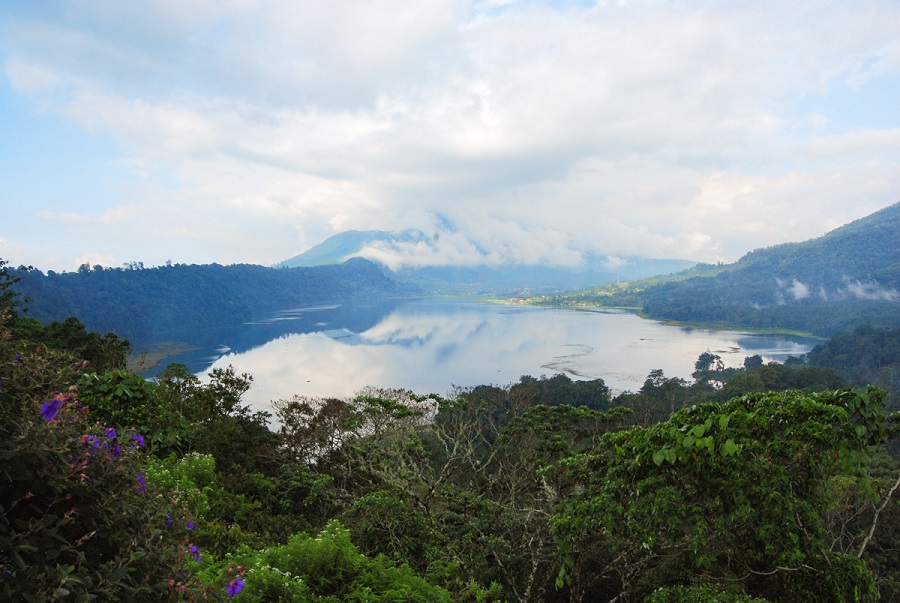
In this article, we’ll be sharing several organisations and businesses that are doing their part in tackling Bali’s water issue in different ways. This is in conjunction with the upcoming World Water Day, an annual United Nations observance held every 22 March, which highlights the importance of freshwater, and serves as a day to advocate the sustainable management of freshwater resources with this year’s theme being “Groundwater – Making the Invisible Visible”.
Water is a sacred element that plays an important role in the daily lives of the Balinese people. A symbol of fertility and prosperity, the Balinese understand that water needs to be appreciated and utilised properly to guarantee a prosperous harvest of rice as it is the island’s biggest source of material well-being. Water also plays a huge part in the cultural and religious aspect of the Balinese, as it is used for daily offerings, cleansing ceremonies and holy rituals.
The Balinese have shared water resources since the 9th century through the ‘subak’ irrigation system, which redirects water from the channels to the rice fields and back. The ‘subak’ isn’t merely utilised to water crops but is a manifestation of the Tri Hita Karana itself, the Balinese Hindu philosophy of harmony between God, people and nature. But, recent years have shown great disturbance to the ‘subak’ system as a result of the divergence of water to densely populated areas along with the thousands of hotels across the island that overexploit groundwater resources. Tourism is part of the problem here: “The same volume of water that would last 100 rural families for three years is consumed by 100 tourists in just 55 days,” explains PT PIPA, a water efficiency company based in Indonesia.
According to Bali Water Protection (BWP), through discussions with farmers and reports from governmental and academic institutions regarding Bali’s water table has decreased over 70 metres in several areas in approximately 10 years, while a great number of wells are drying up or running with foul water, especially in the south. Data gathered by Indonesia’s own Environmental Protection Agency showed that 260 out of 400 rivers in Bali have run dry. The water level of Lake Buyan, which is Bali’s second-largest natural reserve of fresh water, decreased from 72 metres in 2011 to 38 metres in 2021. Other issues include irreversible saltwater intrusion into freshwater aquifers, caused by the excessive withdrawal of freshwater on the coast.
BWP is a program established to face Bali’s water scarcity problem. It is an initiative established by IDEP Selaras Alam Foundation, a Non-Governmental Organisation that focuses on the development of media and practical programmes aiming to educate and empower local communities in sustainable development. Aided by the technical support of University Politeknik Negeri Bali, BWP has conducted research for appropriate methods to respond to looming Bali’s water crisis while recharging the aquifers across the island.
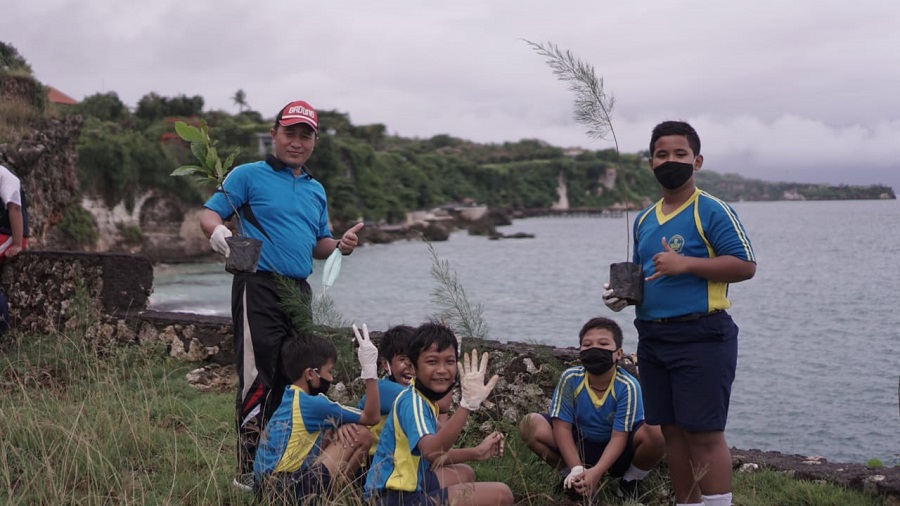
BWP currently has three sub-programmes that are active and running: (1) ‘Adopt a Well’ is an aquifer rehabilitation programme where BWP constructs rainwater-fed recharge wells in 9 Bali regencies, which serves as an additional water source in addition to groundwater reserves; (2) ‘Adopt a River’ is a public education programme where BWP invites public elementary schools in Bali to several of their activities such as teaching the students about water conservation and tree planting, as well as the distribution of educational media in the form of comic books to schools; (3) ‘Adopt a Water’ is a public awareness campaign aimed to raise awareness on the importance of water conservation and protection through digital and social media platforms such as news releases, Facebook and Instagram.
Each year, the ‘subak’s resources decrease as Bali’s water resources decrease, threatening its existence as a whole due to decreasing water flow resulting in dry lands. Hence, necessary measures must be implemented to keep the upstream area sustainable and to create policies to halt projects that can threaten the existence of the ‘subak’.
For those who’d like to contribute Bali Water Protection Programme’s initiatives and help them to solve the water crisis by doing aquifer recharge and investing in long-term freshwater resilience, you can make a donation through their website.
In addition to BWP, other businesses and organisations are also doing their part in the conservation and protection of the water in Bali, ranging from one of the most eco-sustainable waterparks in the world, an F&B company utilising filtered rainwater for its products and an organisation that keeps Bali’s waters clean from waste.
Waterbom Bali
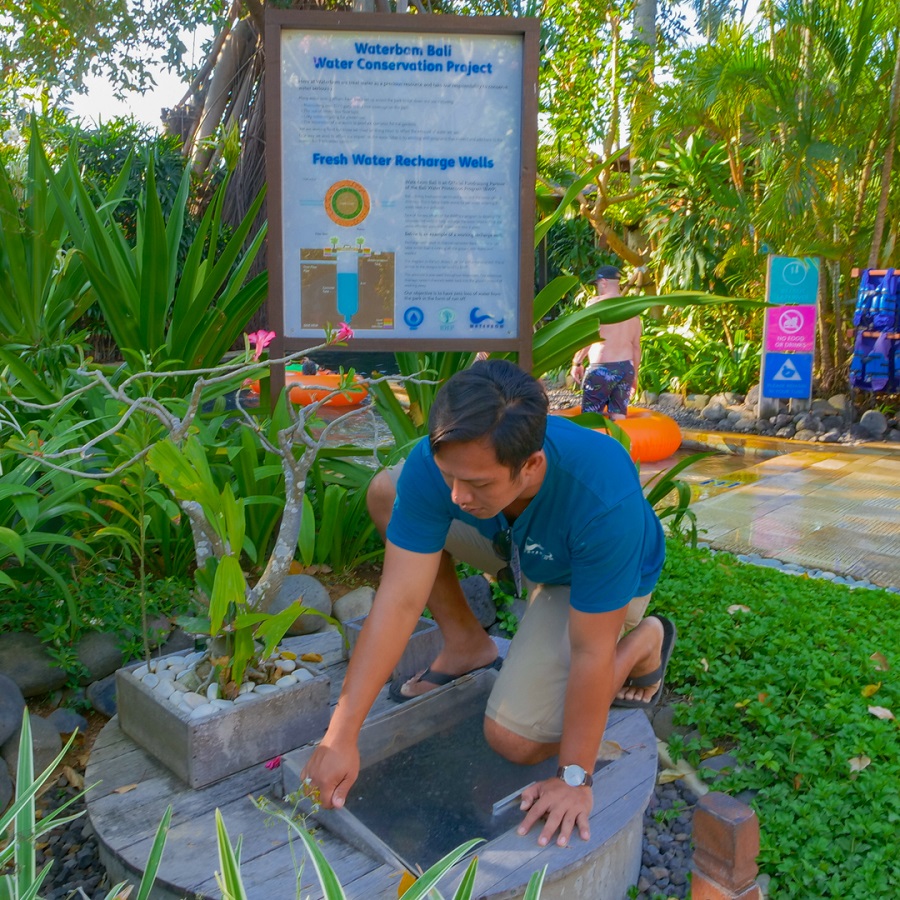
Since its establishment over 28 years ago, Waterbom Bali has always had the goal of presenting a destination where visitors can enjoy an unforgettable and exciting experience, while also respecting and being mindful of its natural surroundings and having minimal impact on its existing landscape. Waterbom Founder, Santo Gulino, carefully developed the park with its natural environment in mind, where over 50% of the area’s original local greenery is conserved and all of the park’s features and slides are developed around the existing flora and fauna.
With Santo’s son, Sayan Gulino, taking the mantle as CEO, he has taken this love for the environment further, implementing sustainable practices to reduce water consumption, energy use and waste to landfills. They’ve created an extensive plan to enhance the long-term sustainability of business practices across organic farming, carbon-neutral, water, waste and energy management.
As one of the largest waterparks in Southeast Asia, you can imagine how much water is used throughout the park every day. Working with Bali-based environmental engineering consultancy, Mantra, the park has been able to save 28% of its annual water consumption (22,700,000 litres/year). Waterbom Bali is continuing their efforts with an overall target to reduce five percent of waste, water and energy consumption annually.
So how does a 3.8-hectare waterpark carry out effective water management? (1) The first step is always resource monitoring and measurement. With baseline data, the park can identify high-usage areas then strategise saving methods based on this. (2) The park has implemented a ‘closed-loop filtration system’, whereby the water from all slides is directed to a single source (their Lazy River) after being filtered, which means water is re-circulated and not simply drained away into municipal sewage. (3) They have an internal Sewage Treatment Plant aimed at recycling greywater from gardening, kitchens and laundry facilities. This creates an estimated saving of 684 gallons of water per day. (4) Waterbom Bali has installed 9 recharge wells in the park, aimed at feeding the water back down into the underground aquifers, estimating a return of 160,263 gallons of water each year. This is tied to a zero run-off policy, pushing rainwater to infiltrate into the ground. (5) They have also installed low flow water-saving appliances throughout the park, which can reduce water usage by 58% to 95%.
To stay accountable for their own efforts, Waterbom Bali formed a dedicated sustainability team known as the ‘Green Team’ or ‘Eco-Champions’ to monitor and report Waterbom’s energy, water and waste consumption. The reporting system has allowed them to calculate their yearly climate footprint, which is then assessed, the date reviewed, and new systems are carried out or updated annually to further reduce waste and advance operations. This helped them become the first tourism operation in Bali to officially become carbon neutral since 2018.
The systems and technology used by Waterbom Bali prove that tourist-based companies – be it hotels, restaurants or parks – can implement effective water management strategies into their business. This not only protects Bali’s water but can also even create substantial long-term financial savings as well.
Kore Culture Lab
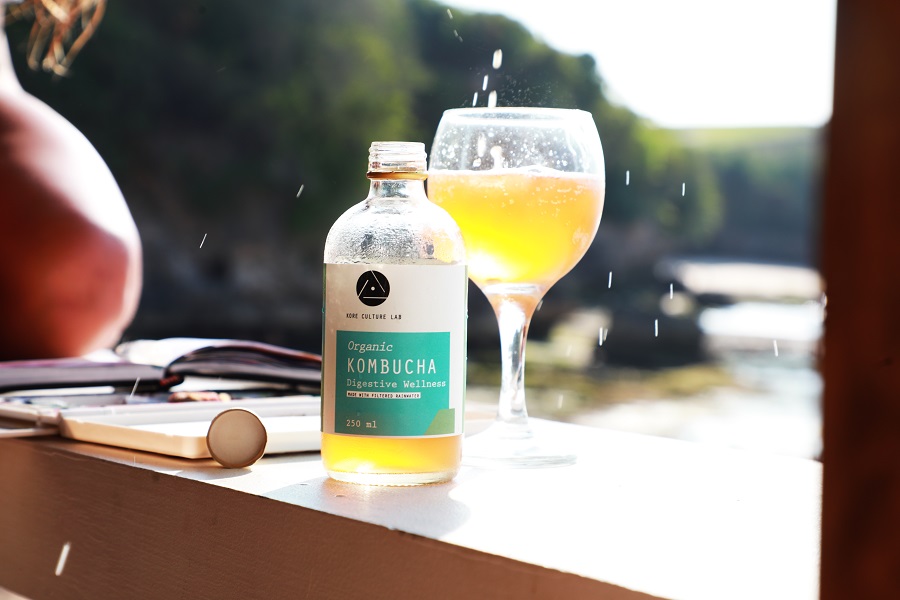
Another solution to Bali’s water scarcity is rainwater harvesting; this has been implemented by the likes of BWP in their initiatives as well as one company that has successfully harnessed this regenerative practice into an effective business model: Kore Culture Lab, a brewery of probiotic-rich beverages that utilises filtered rainwater for its products.
The brainchild of Matt Cook, Kore Culture Lab’s main objective is to provide food and beverage products that are low in sugar and promote a healthy gut-biome, knowing the importance of these two aspects for our immune system. The company produces a line of low-sugar and nutritious probiotic drinks like kombucha, rain tea, root beer and health shots.
Whilst promoting health and wellness is a key component of Kore, Matt wanted to incorporate an environmentally sustainable practice that could have a positive impact on the planet, and seeing the water crisis Bali is facing, he decided to use filtered rainwater for his products. To guarantee the rainwater is safe for their products, Kore Culture Lab captures and filters rainwater before it touches the ground and conducts regular laboratory treatments to ensure that the filtered rainwater used in their products is safe. This is a great example of how to raise awareness on Bali’s water scarcity problem whilst simultaneously being part of its solution.
But why rainwater harvesting you might ask? Rainwater harvesting is one of the simplest and oldest methods of self-supply water which can be utilised for a number of things. It is a relatively clean and free water source that grants us complete control of the water supply. In addition to being socially acceptable and environmentally responsible, rainwater harvesting is self-sufficient and helps preserve water, especially in areas with water scarcity.
The company has also established subsidiaries, Bali Rainwater and Yayasan Bali Hujan Peduli, to provide rainwater harvesting systems to the local communities in Bali’s driest areas. More and more food and beverage companies (especially breweries and distilleries) are operating in Bali, if they utilised rainwater harvesting, imagine how much water one could save?
Sungai Watch
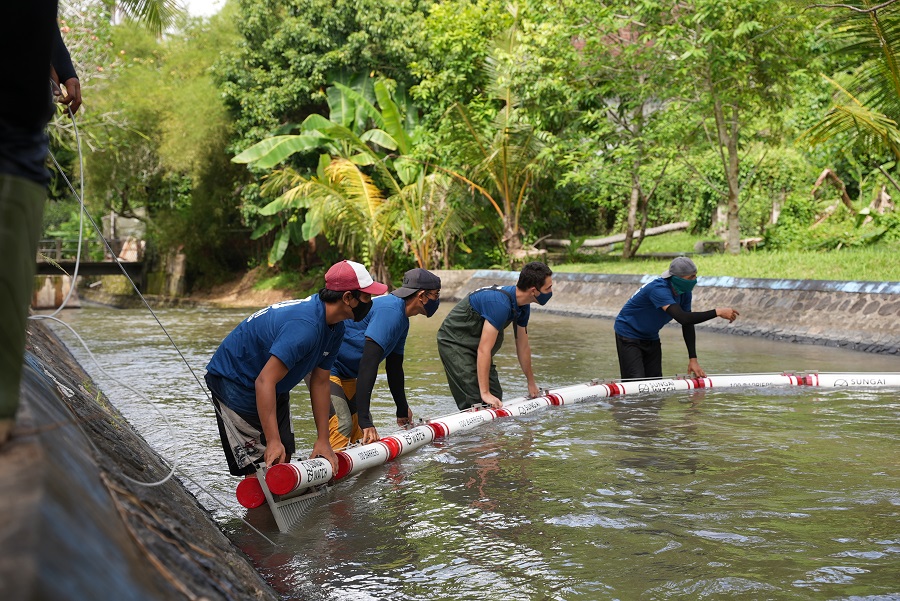
Whilst the efforts to both conserve water and to replenish it across the island are important, equally as important is keeping Bali’s bodies of water clean and pristine. That is precisely what Gary Bencheghib and his team at Sungai Watch (river watch) have been doing.
Bali has a problem with waste management. Without a proper waste separation – or even collection – infrastructure, household rubbish is often dumped at random or sent to landfills. Illegal landfills on riverbanks are estimated to contribute to 33,000 tons of plastic leaking into the waterways every year. “There continues to be an out of sight, out of mind mentality,” Gary explains.
In October 2020, Sungai Watch installed their first river barrier in Bali. These barriers trap rubbish floating downstream; this is then collected and brought to their sorting facility. In 2021, the organisation published their yearly achievements and also key findings in an annual Impact Report. Their report shows: they had installed 105 trash barriers, collected 333,336kg of non-organic waste and audited 227,842 pieces of trash. All of this rubbish was headed to the ocean — now removed by Sungai Watch! Their cleanups have extended into Bali’s mangrove forests too, which have been choked by litter for years. The non-organic waste they collect consists of 89% plastics, 8% glass, 2% fabrics (of which some include plastic (polyester) and 1% metal. The impact report also includes an impressively detailed breakdown of brand audits, plastic types, recyclables vs non-recyclable data and more.
What happens to all of the collected waste? The majority of waste goes to recycling and up-cycling facilities in Java, such as Re-Pal who create zero-waste shipping pallets and another company that turns plastic bottles into yarn. However, Sungai Watch is now developing in-house up-cycling solutions to create new materials out of low-value waste, such as plastic sheets, bricks and tiles which can be made into other products. They also compost their organic waste or make it into ‘biochar’.
For those wanting to support Sungai Watch can do so by sponsoring river barriers, joining cleanups or volunteering in sorting facilities. Their 2021 Impact Report is also an insightful document worth reading.







